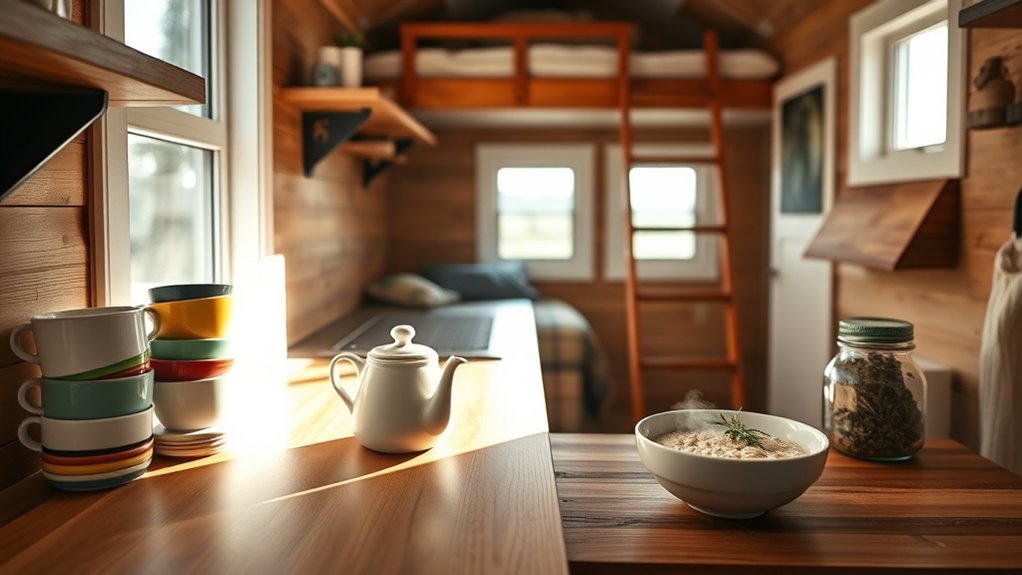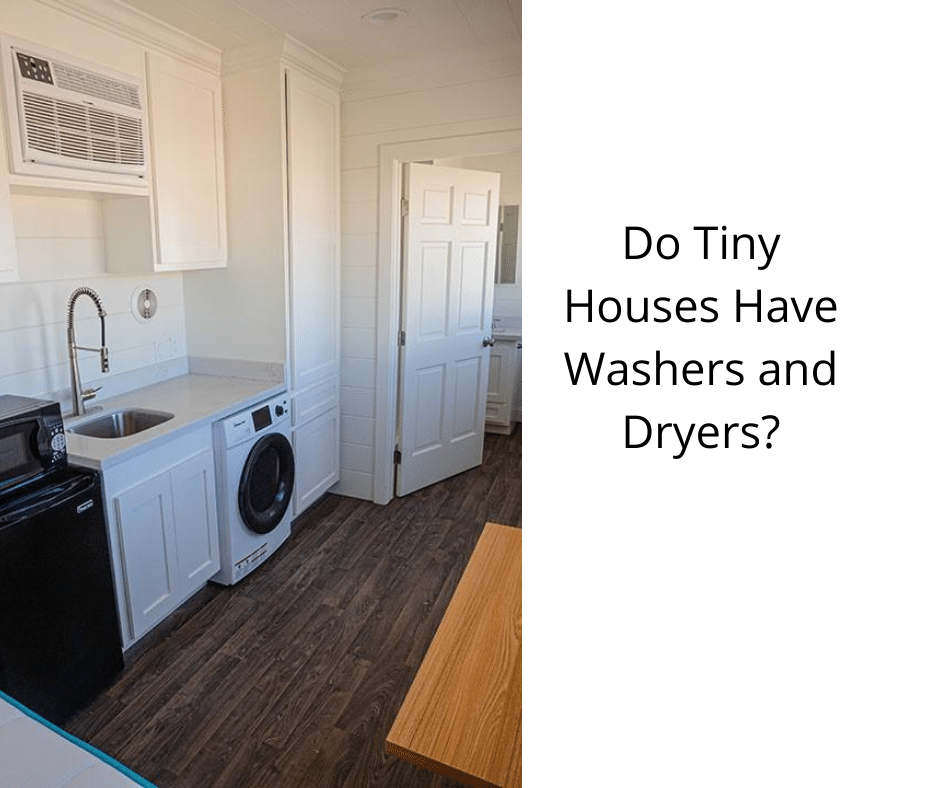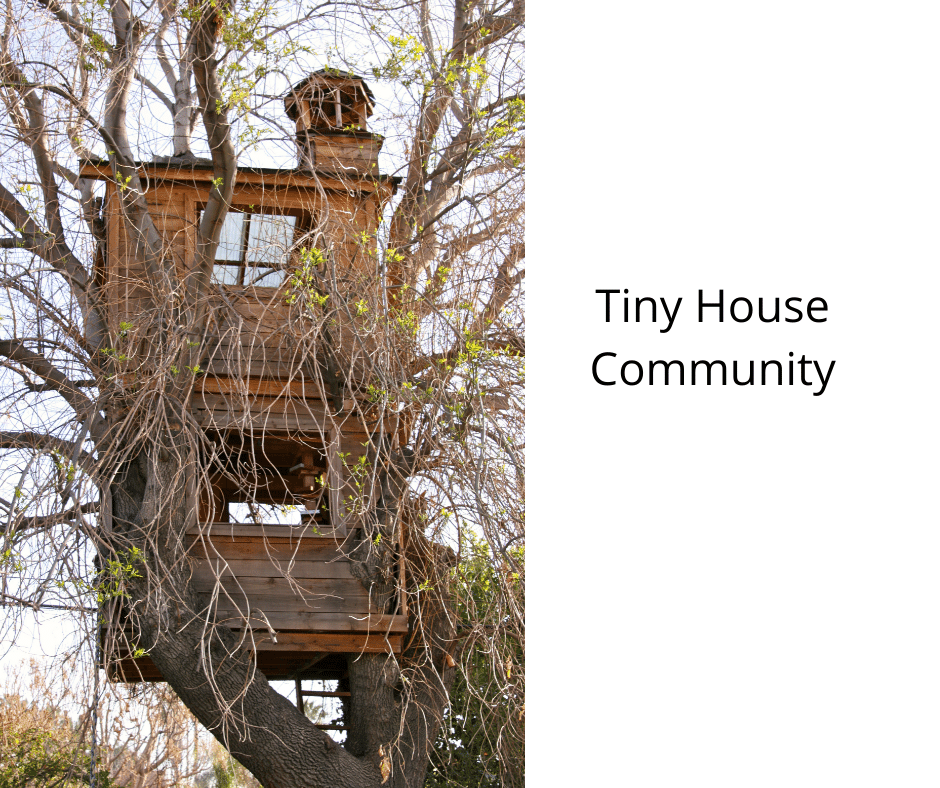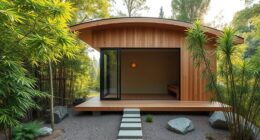In a tiny house, you focus on purposeful routines that maximize space and efficiency. You keep essentials like keys and wallets in designated spots and use multi-purpose appliances to save room. Your mornings are quick, starting with minimalistic habits. Throughout the day, you organize tasks with foldable furniture and stackable storage, maintaining a clutter-free environment. Evenings are about tidying up to promote relaxation. To learn more about how tiny house residents optimize their daily lives, keep exploring these helpful habits.
Key Takeaways
- Prioritize space-saving habits like designated spots for essentials and multi-purpose furniture to maintain an organized environment.
- Follow a minimalist morning routine with quick preparations and intentional habits to start the day efficiently.
- Use foldable furniture and stackable storage to manage chores and work tasks seamlessly in limited space.
- Keep the living area tidy and perform quick tidying routines to prevent clutter during evening relaxation.
- Develop a lifestyle centered on minimalism and quality possessions to enhance overall space optimization and mental clarity.
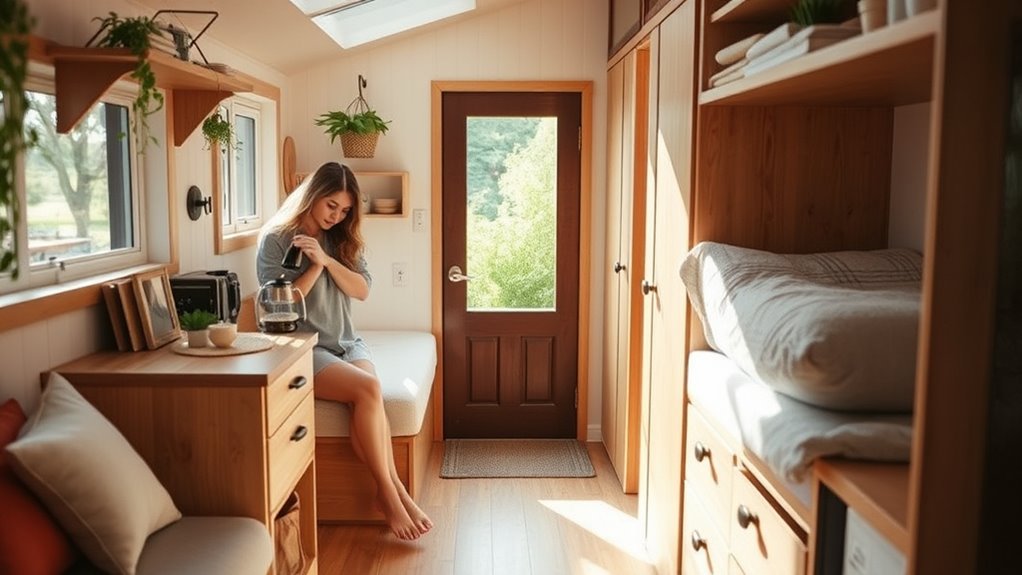
Living in a tiny house means your daily routine is all about maximizing space and efficiency. Every activity, from waking up to winding down, revolves around making the most of limited square footage. You quickly learn that space optimization isn’t just a design feature; it’s a way of life. You develop minimalist habits that help keep clutter at bay and ensure your environment remains functional. Instead of dedicating time to tidying large areas, you focus on keeping only what you truly need within reach. This habit streamlines your mornings and keeps your home feeling open and inviting.
Your mornings often start with a quick routine that emphasizes simplicity. Because space is limited, you set up a designated spot for essentials like keys, wallet, and phone, so you’re not wasting time searching for them. You might prepare your breakfast in a compact kitchen, using multi-purpose appliances to save space. As you eat, you’re mindful of not leaving a mess, knowing that cleaning up is easier when everything has its place. This minimalist approach influences your mindset, making you more intentional about what items you bring into your home, which in turn helps maintain a clutter-free environment.
Throughout the day, your routines are shaped by the need for organization and efficiency. Tasks like laundry, cleaning, or even working remotely are all approached with space optimization in mind. You might use foldable furniture or stackable storage bins to keep clutter out of sight when not in use. Your work setup, whether a small desk or a dedicated corner, is carefully curated to maximize functionality without overcrowding. Multi-purpose furniture becomes your best friend—sofa beds, fold-down tables, or storage ottomans help you save space while providing comfort and utility. These choices make your daily activities smoother, reducing the time and effort needed to maintain order.
In the evenings, winding down involves routines that prioritize relaxation and minimalism. You keep your living space tidy, knowing that a clutter-free environment promotes mental clarity. You might do a quick sweep of the space, putting items back in their designated spots, which prevents chaos from building up. When it’s time to sleep, your bed setup is designed to fold away or serve dual functions, freeing up space for other activities. Throughout your day, you’re constantly practicing space optimization and minimalist habits, which not only make your tiny house more livable but also enrich your overall sense of calm and control. This lifestyle encourages you to focus on quality over quantity, turning your small home into a peaceful, organized sanctuary.
Frequently Asked Questions
How Do Tiny House Residents Handle Long-Term Storage?
You handle long-term storage in your tiny house through compact storage solutions and creative organization. You maximize space by using multi-functional furniture, under-bed bins, and vertical shelves. You also declutter regularly to keep only essentials, ensuring everything has a designated spot. This approach helps you maintain an organized living area, making it easier to access items when needed and keeping your tiny home functional and clutter-free for the long haul.
What Are Common Challenges Faced During Daily Routines?
You often face challenges with space optimization and noise management during your daily routines. Limited space requires you to stay organized and prioritize essentials, making it tricky to keep everything tidy. Noise from appliances or neighbors can disrupt your focus or relaxation. To tackle these issues, you adapt by planning your activities carefully, using multi-functional furniture, and setting boundaries to minimize noise, ensuring a smoother, more comfortable daily experience.
How Do Residents Maintain Privacy in Small Spaces?
Ever wonder how tiny house residents find personal space? You can use privacy solutions like curtains, sliding doors, or foldable screens to create distinct areas. Smart furniture, like fold-out beds or multi-purpose pieces, also helps carve out personal zones. Don’t forget, establishing routines and respecting each other’s space fosters a sense of privacy. How can you make your small space feel more private and comfortable?
What Strategies Do Residents Use for Meal Planning?
You plan your meals by scheduling regular meal prep sessions to save time and avoid clutter. You create a grocery shopping list focused on versatile ingredients, making it easier to cook nutritious meals without excess. You often shop weekly, sticking to your list to prevent impulse buys. This organized approach guarantees you have healthy options readily available, reducing stress and maximizing your tiny house space efficiently.
How Do Tiny House Residents Stay Connected Socially?
Ever wonder how tiny house residents stay socially connected? They actively participate in community events, which foster bonds and create a sense of belonging. Additionally, they leverage digital communication like social media and messaging apps to keep in touch with friends and neighbors. These methods help them maintain strong social ties despite limited space, making sure they stay connected and engaged with their wider community.
Conclusion
Living in a tiny house is like having a cozy nest where every moment feels intentional. Your daily routine becomes a dance of simplicity and mindfulness, making space for what truly matters. With less to manage, you find more time for connection, creativity, and relaxation. It’s a lifestyle that proves happiness isn’t about size but about how you fill your days. Embrace this tiny world, and you’ll discover a life that feels both freeing and fulfilling.
